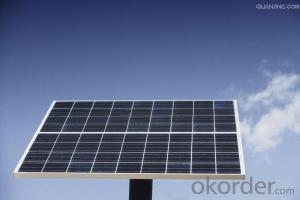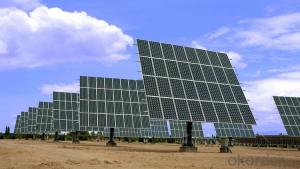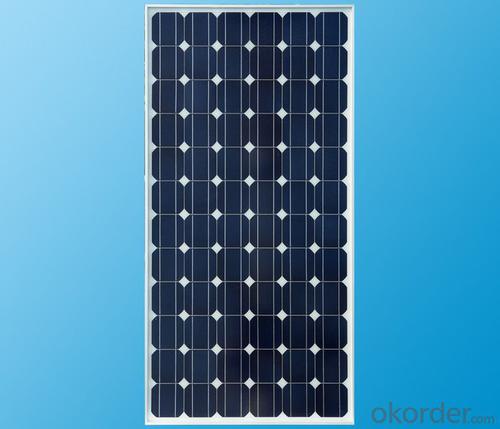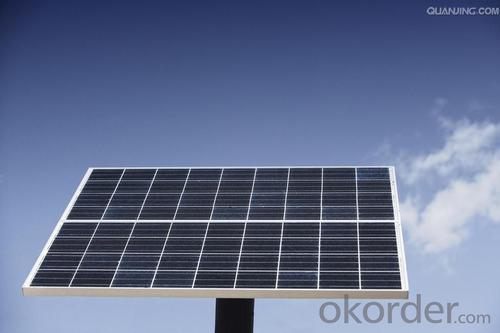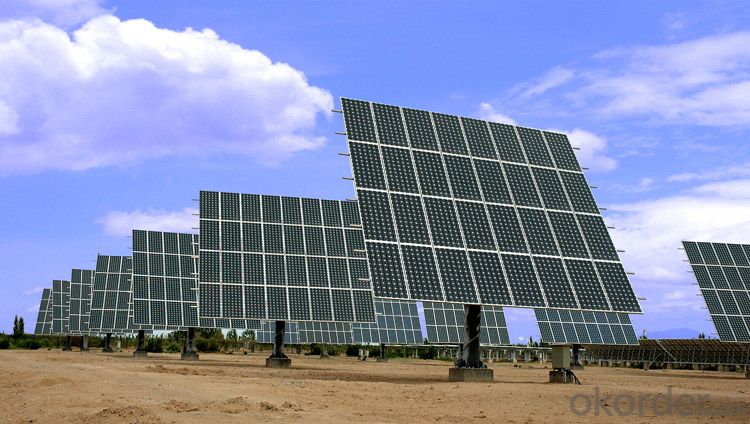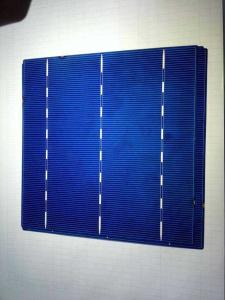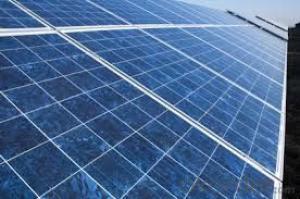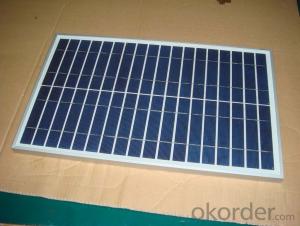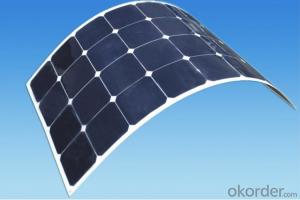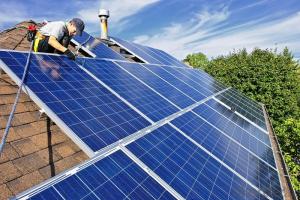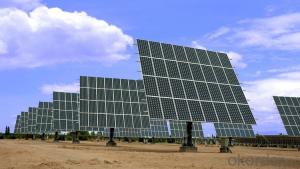Amorphous Silicon Solar Cells - Favorites Compare Best Price Power 100W 18V Solar Panel in Solar System
- Loading Port:
- China Main Port
- Payment Terms:
- TT OR LC
- Min Order Qty:
- -
- Supply Capability:
- 10000000000000 watt/month
OKorder Service Pledge
OKorder Financial Service
You Might Also Like
Quick Details
| Place of Origin: | Guangdong China (Mainland) | Brand Name: | CAP | Model Number: | 50w100w150w200w250w300w |
| Material: | Monocrystalline Silicon | Size: | 1385*1035*75mm | Number of Cells: | 72pcs |
| Max. Power: | 300w | type: | solar panel | color: | blue&black |
| warranty: | 5 years |
Packaging & Delivery
| Packaging Detail: | standard export package for solar panel |
| Delivery Detail: | 7-15 days for solar panel |
Specifications
solar panel
High Efficiency
25 years Warranty
High-transmissivity low-iron tempered glass
Solar Panel
50w100w150w200w250w300w
Characteristics
1,High and stable conversion efficienly based on over 4 years professional experience
2 ,High reliability with guaranteed +/-10% output power tolerance
3,Proven materials,tempered front glass,and a sturdy anodized aluminum frame allow modules to operate reliably in multiple mountily configurations
4,Combination of high efficicncy and attractive appearance
Quality and Safety
1,25 year 80%,10 year 90% power warranty 3 year power warranty
2,ISO9001:2000 (Quality Management system) certified factory
3,Product Quality warranty & products Liability Insurance to guarantee and user' benefits
4,Certifications TUV Intercert, CE Temperature Coefficients
| Module Type | 100w | 150w | 200w | 250w | 300w |
| Maximum Power at ST(Pmax)W | 100wp | 150wp | 200wp | 250wp | 300wp |
| Maximum Power Voltage(Vmp)V | 36/18 | 36/18 | 36/18 | 30.8v | 36/18 |
| Maximum Power Current(Imp)A | 2.77/5.55 | 4.16/8.33 | 5.55/11.1 | 8.11A | 8.33/16.66 |
| Open Circuit Voltage(Voc)V | 39.5/19.05 | 39.3/19.4 | 39.6/19.5 | 36.2V | 39.6/19.8 |
| Short Circuit Current(Isc)A | 3.04/6.09 | 4.58/9.16 | 6.1/12.2 | 8.7A | 9.16/18.33 |
| Cell Efficiency(%) | 18.60% | 18.10% | 18.60% | 17.80% | 18.10% |
| Module Efficiency(%) | 17.70% | 17.20% | 17.70% | 17.10% | 17.20% |
| Operating Temperature°C | -40°C to +85°C | -40°C to +85°C | -40°C to +85°C | -40°C to +85°C | -40°C to +85°C |
| Maximum system voltage | 1000V(IEC)DC | 1000V(IEC)DC | 1000V(IEC)DC | 1000V(IEC)DC | 1000V(IEC)DC |
| Power tolerance | -0.03 | -0.03 | -0.03 | -0.03 | -0.03 |
| Temperature coefficients of Pmax | -0.45%/°C | -0.45%/°C | -0.45%/°C | -0.45%/°C | -0.45%/°C |
| Temperature coefficients of Voc | -0.27%/°C | -0.27%/°C | -0.27%/°C | -0.27%/°C | -0.27%/°C |
| Temperature coefficients of Isc | 0.05%/°C | 0.05%/°C | 0.05%/°C | 0.05%/°C | 0.05%/°C |
| Weight(kg) | 8 | 11 | 14 | 20 | 25.5 |
| Number of cell(pcs) | 4*9 | 4*9 | 6*10 | 6*12 | 6*12 |
| Dimensions(mm) | 1194*534*35/30 | 1580*808*50/35 | 1471*670*40/35 | 1640*992*50 | 2000*1050*50 |
- Q: What factors affect the efficiency of solar cells?
- Several factors can affect the efficiency of solar cells, including the quality and purity of the materials used, the design and construction of the cells, the amount of sunlight received, the temperature, and any external shading or obstructions. Additionally, the angle and orientation of the solar panels, as well as the presence of dirt or dust on the surface, can also impact the efficiency of solar cells.
- Q: Can solar cells be used for disaster relief efforts?
- Yes, solar cells can be effectively used for disaster relief efforts. Solar cells provide a reliable and sustainable source of energy, which is crucial during emergencies when conventional power sources may be disrupted or unavailable. Solar cells can power essential devices such as lighting, communication equipment, and medical devices in disaster-stricken areas, improving response and recovery operations. Moreover, solar-powered systems can be quickly deployed and are cost-effective in the long run, making them an ideal solution for disaster relief efforts.
- Q: What is the impact of shading on solar cell performance?
- Shading has a significant impact on solar cell performance as it reduces the amount of sunlight reaching the cells, leading to decreased energy production. Even partial shading, such as from trees or nearby buildings, can result in substantial losses in power output. This is because solar cells are connected in series, and when one cell is shaded, it acts as a barrier to the current flow, affecting the performance of the entire system. To mitigate this issue, shading analysis and proper system design, like using bypass diodes, can help minimize the impact of shading on solar cell performance.
- Q: What is the impact of solar cells on reducing greenhouse gas emissions?
- Solar cells have a significant impact on reducing greenhouse gas emissions as they generate clean and renewable energy from the sun without producing any harmful emissions. By replacing traditional fossil fuel-based electricity generation, solar cells help to mitigate climate change by reducing the release of greenhouse gases, such as carbon dioxide, into the atmosphere. This transition to solar energy not only contributes to a cleaner environment but also helps in achieving global climate goals and creating a sustainable future.
- Q: What is the difference between solar cells and solar panels?
- Solar cells and solar panels are closely related but have some key differences. A solar cell refers to a single unit that converts sunlight into electricity through the photovoltaic effect. It is the basic building block of a solar panel. On the other hand, a solar panel, also known as a photovoltaic module, is made up of multiple interconnected solar cells. The purpose of a solar panel is to harness a larger amount of sunlight and generate a higher output of electricity. In summary, while a solar cell is the individual component that directly converts sunlight into electricity, a solar panel is a collection of interconnected solar cells that work together to produce a higher power output.
- Q: Is that true that the price of solar cells will be reduced in the coming year?
- It is very possibile that that solar cells' price will go down this year because there were many orders last year, either from European or China market. The solar cells are actually very sustainable. Once you buy it, you can use it for years. With the falling demand the price of course will go down.
- Q: How do solar cells impact national energy policies?
- Solar cells have a significant impact on national energy policies as they promote the diversification and decentralization of energy sources. By harnessing the power of the sun, solar cells contribute to the development of renewable energy and reduce reliance on fossil fuels. This, in turn, helps countries achieve their energy security goals, mitigate climate change, and enhance sustainability. Governments often incentivize the adoption of solar cells through policy measures such as feed-in tariffs, tax credits, and research funding, which further drive the growth of solar energy and shape national energy policies.
- Q: Can solar cells be used in powering autonomous vehicles?
- Yes, solar cells can be used to power autonomous vehicles. Solar panels can be installed on the exterior or integrated into the body of the vehicle to capture sunlight and convert it into electricity. This renewable energy source can help supplement the vehicle's power needs, extending its range and reducing its reliance on fossil fuels. Additionally, advancements in solar technology and efficiency are making it more feasible to use solar power as a primary or secondary energy source for autonomous vehicles.
- Q: Can solar cells be used on spacecraft?
- Yes, solar cells can be used on spacecraft. In fact, they are extensively used to generate electricity on spacecraft by converting sunlight into electrical energy.
- Q: How does a solar cell raise industrial efficiency?
- December 2014, the world record for solar cell efficiency at 46% was achieved.
Send your message to us
Amorphous Silicon Solar Cells - Favorites Compare Best Price Power 100W 18V Solar Panel in Solar System
- Loading Port:
- China Main Port
- Payment Terms:
- TT OR LC
- Min Order Qty:
- -
- Supply Capability:
- 10000000000000 watt/month
OKorder Service Pledge
OKorder Financial Service
Similar products
Hot products
Hot Searches
Related keywords

